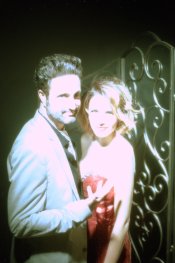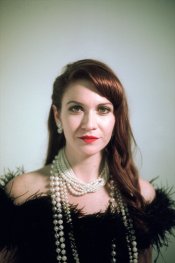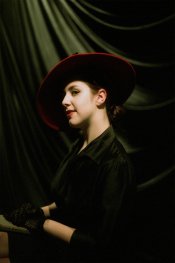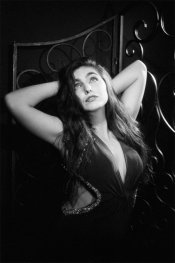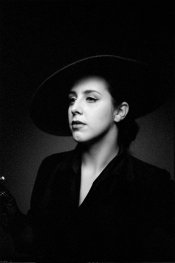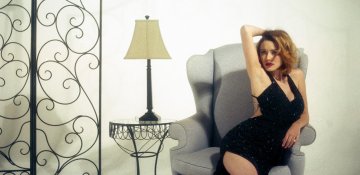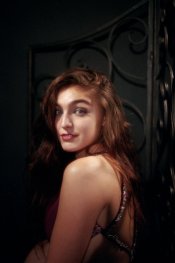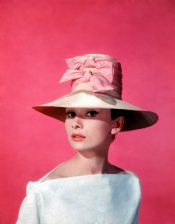asteroid_death
Member
- Joined
- Jul 27, 2013
- Messages
- 46
- Format
- Multi Format
Hello fellow analog enthusiasts! I have a couple of questions for the veterans...
I recently attended a 'noir' themed photography event where I shot 4-5 rolls of various stocks (Hp5, Tri-X, Fuji 400, EC100). I was the only person out of 50+ people shooting film! Big surprise there.
I was a little discouraged when I arrived to see that they were using three-light setups with wireless transmitters for the key lights. I decided to play it safe and only shot one picture with the wireless unit on my hotshoe. I was not sure how to meter for the flash + the fill lights, so I asked someone what their dslr settings where. The person said they were shooting f8 @ 1/60. I decided to take a chance and shot the photo below (Elite Chrome 100) at f8 @ 1/125. Although I DID want about 1/2 a stop of overexposure since I was using net/mist diffusion, the slide film was too sensitive and the highlights blew out. Ultimately I would like to become a wiz at shooting slides (a pointless endeavor I know)...

...SO my question is 1. how do you meter for flash in a situation like this (where you are not in control of the setups) and 2. did 'old-school studio photographers use flash photography in the studio or was it all just continuous lighting (generally speaking)?
The slides I shot without the flash came out quite well I think...


...but the tri-x was my favorite.


There is a 1950's 'pin-up' themed shootout coming up soon and I would like to be more prepared for doing battle with the dslr shooters. I am going for this look:

I recently attended a 'noir' themed photography event where I shot 4-5 rolls of various stocks (Hp5, Tri-X, Fuji 400, EC100). I was the only person out of 50+ people shooting film! Big surprise there.
I was a little discouraged when I arrived to see that they were using three-light setups with wireless transmitters for the key lights. I decided to play it safe and only shot one picture with the wireless unit on my hotshoe. I was not sure how to meter for the flash + the fill lights, so I asked someone what their dslr settings where. The person said they were shooting f8 @ 1/60. I decided to take a chance and shot the photo below (Elite Chrome 100) at f8 @ 1/125. Although I DID want about 1/2 a stop of overexposure since I was using net/mist diffusion, the slide film was too sensitive and the highlights blew out. Ultimately I would like to become a wiz at shooting slides (a pointless endeavor I know)...
...SO my question is 1. how do you meter for flash in a situation like this (where you are not in control of the setups) and 2. did 'old-school studio photographers use flash photography in the studio or was it all just continuous lighting (generally speaking)?
The slides I shot without the flash came out quite well I think...
...but the tri-x was my favorite.
There is a 1950's 'pin-up' themed shootout coming up soon and I would like to be more prepared for doing battle with the dslr shooters. I am going for this look:









